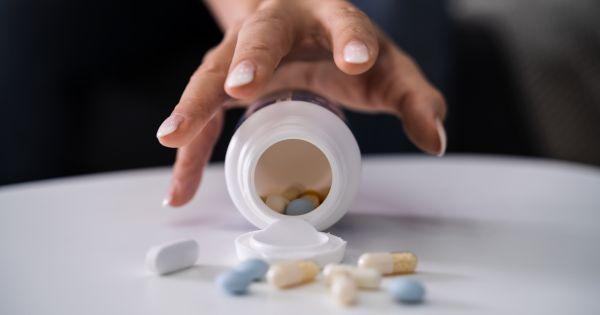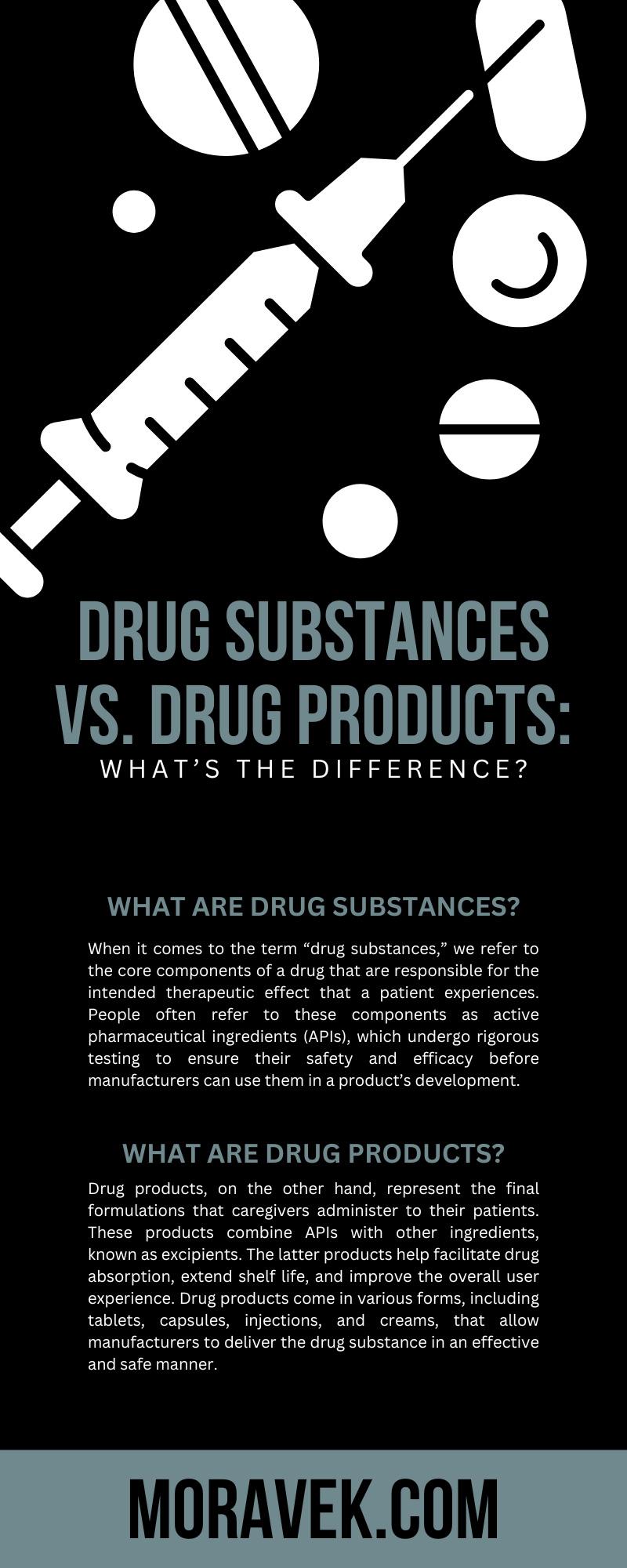
When some people hear the terms “drug substances” and “drug products,” they might think these are one and the same. However, the meanings of these phrases are quite different. Knowing these distinctions can help you successfully achieve your goals in the pharmaceutical industry. Read on to learn about the difference between drug substances and drug products.
What Are Drug Substances?
When it comes to the term “drug substances,” we refer to the core components of a drug that are responsible for the intended therapeutic effect that a patient experiences. People often refer to these components as active pharmaceutical ingredients (APIs), which undergo rigorous testing to ensure their safety and efficacy before manufacturers can use them in a product’s development.
The purity, strength, and integrity of a drug substance are critical, as these factors directly affect how effective the medications are and whether patients can safely consume them. Otherwise, companies will put the welfare of patients and their reputations at risk. A deep understanding of drug substances is imperative for professionals in the drug industry, as these components are the building blocks upon which companies build effective medications.
What Are Drug Products?
Drug products, on the other hand, represent the final formulations that caregivers administer to their patients. These products combine APIs with other ingredients, known as excipients. The latter products help facilitate drug absorption, extend shelf life, and improve the overall user experience. Drug products come in various forms, including tablets, capsules, injections, and creams, that allow manufacturers to deliver the drug substance in an effective and safe manner.
The development of a drug product is a complex process that involves the careful selection and combination of its components and extensive testing to ensure it meets rigorous industry standards. This process can extend from initial development stages to final market approval.
What Are Some Examples of Drug Substances?
Now that you know the differences between drug substances and drug products, you may wonder what substances pharmaceutical companies use in their drugs. Below are several common examples of drug substances that can be very important in effectively treating medical conditions.
Acetaminophen
Acetaminophen is a primary example of a drug substance with broad applications, including reducing fever and alleviating mild to moderate pain. It is the active pharmaceutical ingredient in a plethora of drug products, including over-the-counter formulations.
Its versatility and effectiveness have cemented its status as a staple in global healthcare. However, despite its widespread use, people must be careful when taking acetaminophen or including it in their drugs, as excessive use can result in severe liver damage. This important fact reflects how manufacturers and consumers must understand the benefits and limitations of each drug substance.
Metformin
Another commonly used drug substance is metformin, which is a lynchpin in treating patients with type 2 diabetes. It operates primarily by lowering the human body’s production of glucose and improving insulin sensitivity. This combination helps reduce a patient’s blood glucose levels.
Consequently, it is the active ingredient in a host of pharmaceutical products aimed at managing diabetes and has been instrumental in improving the quality of life for millions worldwide. Additionally, the ingredient’s ability to lower the risk of cardiovascular diseases and other diabetes-related complications underscores the critical nature of understanding drug substances when developing comprehensive treatment strategies.
Sertraline
Sertraline is pivotal in the pharmacological treatment of patients with mental health disorders. These can include depression, anxiety, and post-traumatic stress disorder. This API can benefit patients by raising a person’s level of serotonin, which is a chemical associated with feelings of well-being and happiness.
Its mechanism shows how drug substances can affect brain chemistry and achieve therapeutic outcomes. Thanks to its effectiveness, sertraline remains a cornerstone in the arsenal against mental health disorders.
Omeprazole
Pharmaceutical companies also often use omeprazole, a prototypical proton pump inhibitor that can help manage gastroesophageal reflux disease and additional maladies characterized by excessive stomach acid production. By selectively inhibiting the hydrogen-potassium ATPase enzyme system on the gastric parietal cell surface, omeprazole significantly reduces gastric acid secretion.
This action aids in alleviating symptoms associated with acid-related disorders and promotes the healing of gastric mucosal damage. Omeprazole serves as the active pharmaceutical ingredient in various drug products, available both over-the-counter and by prescription, highlighting its critical role in modern gastroenterology.
What Should Pharmaceutical Companies Look for in API Partners?
When pharmaceutical companies decide to form partnerships with other companies to produce APIs, they should look for certain criteria to ensure the creation of high-quality, effective, and safe drug products. For example, a reputable API partner should exhibit comprehensive regulatory compliance, including adherence to Good Manufacturing Practices and other standards. This compliance is key in mitigating risks and ensuring that the substances meet the stringent requirements set by the FDA.
Beyond regulatory compliance, pharmaceutical companies must consider the technological capabilities and innovation prowess of prospective API partners. The ability to engage in advanced development processes, adapt to the latest manufacturing technologies, and provide scalable solutions is essential for meeting the dynamic demands of drug development and manufacturing. API partners should also operate in facilities that can handle the complexities of pharmaceutical manufacturing.
In addition, it is essential to find a partner with experienced team members who possess a deep understanding of pharmaceutical sciences and regulatory standards. An experienced staff ensures that every phase of drug substance development, from synthesis to packaging, occurs under stringent quality controls, thereby upholding the integrity of the drug products.
Hence, pharmaceutical companies must prioritize partners who not only have the right technical capabilities but also foster a culture of quality and continued excellence among their employees. By emphasizing all these traits, your firm will be better able to deliver safe and effective medical treatments to patients worldwide.
As we’ve seen, the distinctions between drug substances and drug products are quite vast. Knowing these differences can provide pharmaceutical professionals with many benefits. Moravek offers API pharmaceutical manufacturing of carbon-14 labeled ingredients for phase 0 and 1 clinical trials. We have created more than 100 APIs for clients that met their standards, and we continue to perform quality assurance audits to ensure we provide the best services possible.

